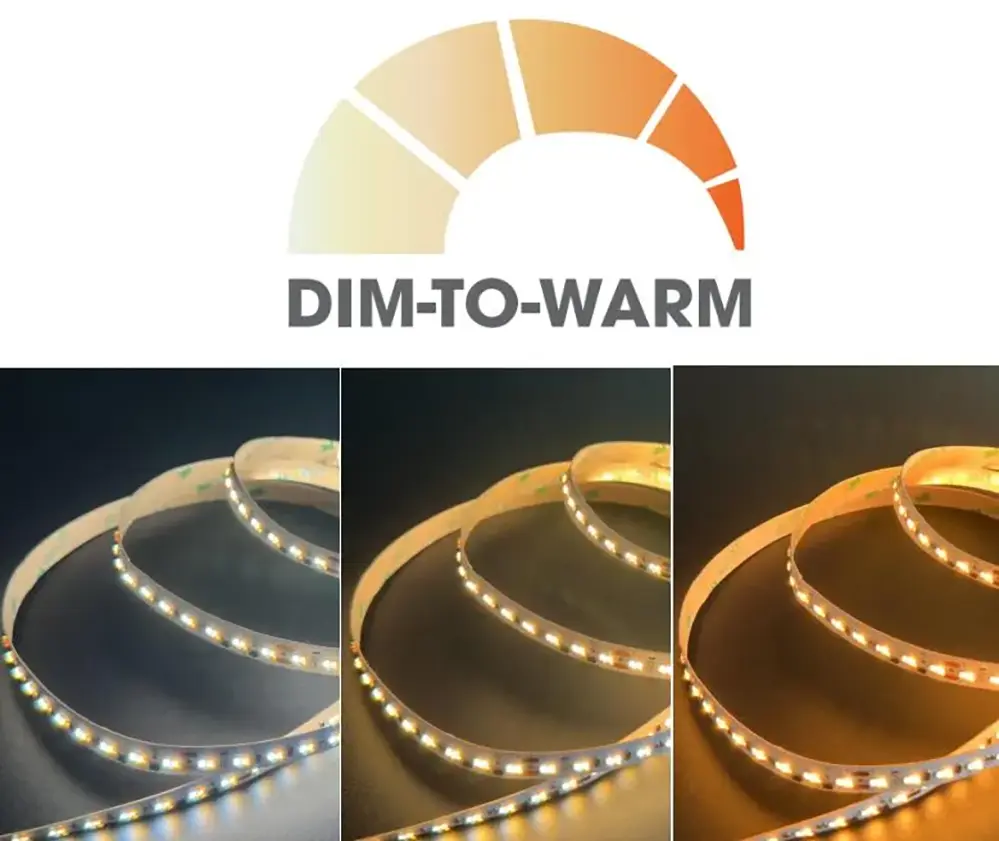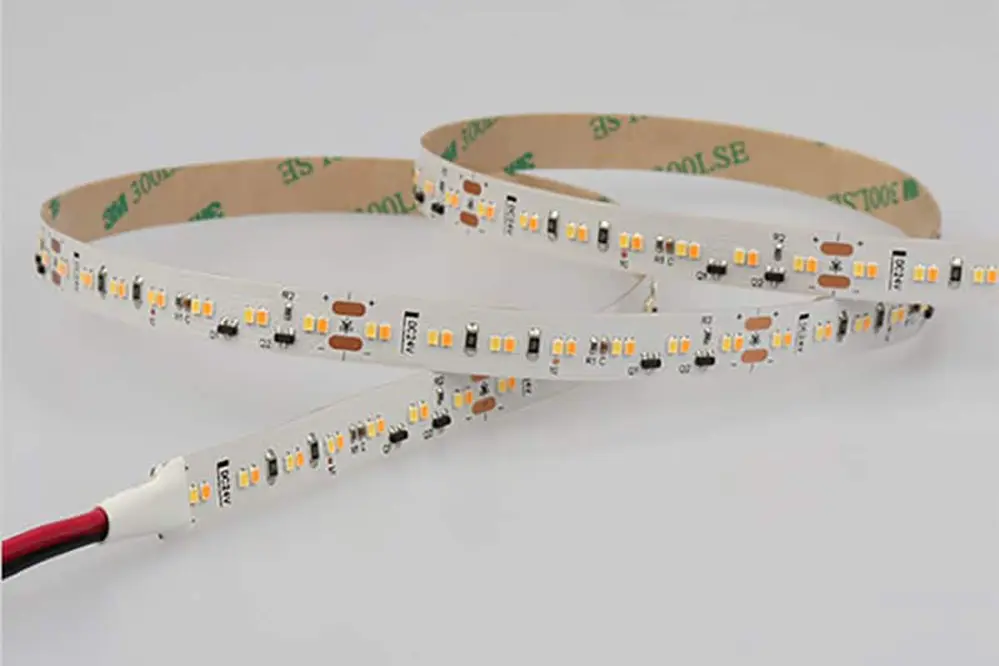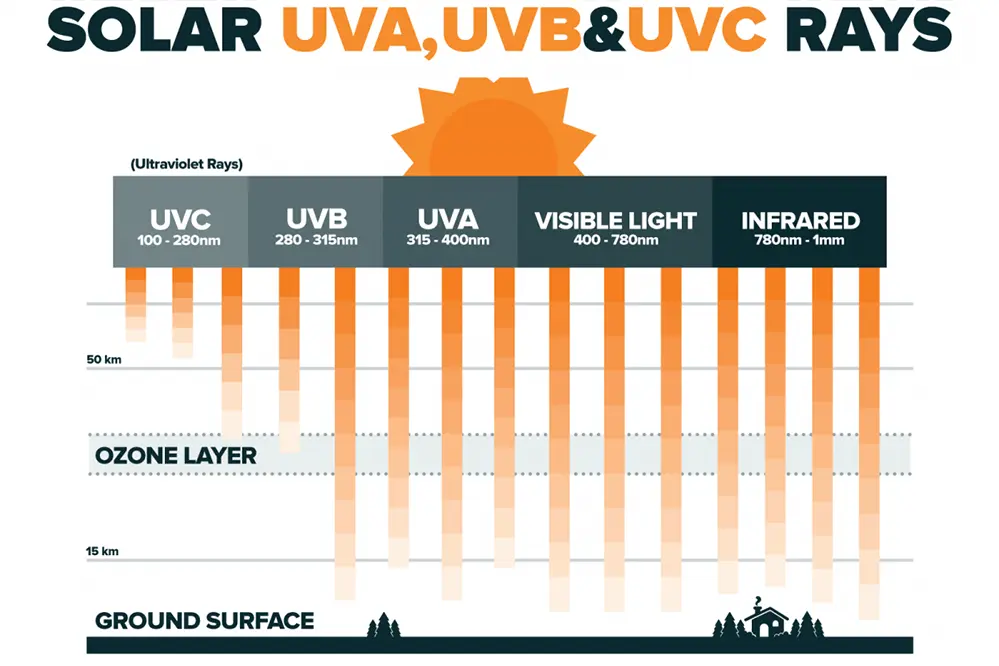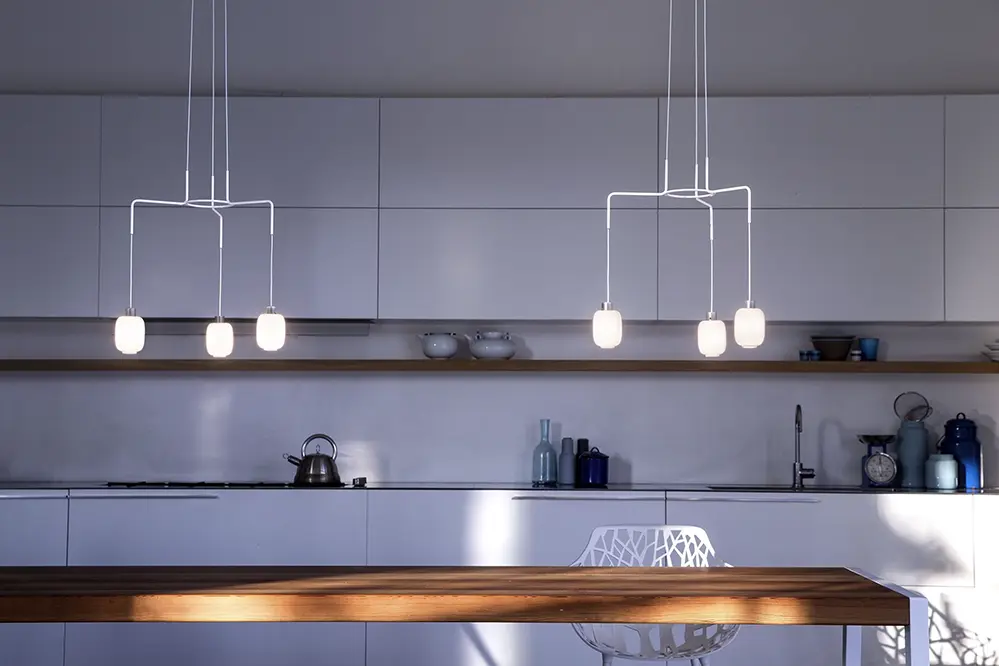In the ever-evolving world of lighting technology, dim to warm LED strips have emerged as a game-changer for both residential and commercial spaces. These innovative lighting solutions offer unparalleled flexibility, energy efficiency, high CRI, and aesthetic appeal. Whether you’re a lighting enthusiast or a professional, understanding the nuances of dim to warm LED strips can significantly enhance your projects.
This comprehensive guide delves into the technology, benefits, applications, and best practices for choosing, installing, and maintaining dim to warm LED strips.
Part 1: Introduction to Dim to Warm LED Strips
Understanding Dim to Warm LED Technology
What Are Dim to Warm LED Strips?
Dim to warm LED strips are advanced lighting solutions designed to adjust their CCT (color temperature) as they are dimmed. Unlike standard LED strips, which maintain a constant color temperature regardless of brightness, dim to warm LEDs shift from a bright, cool white at full brightness to a warm, amber glow when dimmed. This mimics the behavior of traditional incandescent bulbs, providing a more natural and comfortable lighting experience.
Dim to warm LED strips are composed of multiple LED chips, each capable of emitting different color temperatures. These chips work in tandem to create a seamless transition from cool to warm light. This technology is particularly beneficial in settings where ambiance and mood are crucial, such as living rooms, bedrooms, and dining areas.
How Dim to Warm LED Technology Works
The core of dim to warm LED technology lies in its ability to adjust color temperature. This is achieved through a combination of different LED chips within the strip. Typically, these strips incorporate both cool white and warm white LEDs. As the strip is dimmed, the cool white LEDs gradually decrease in intensity while the warm white LEDs take over, resulting in a warmer overall light. This seamless transition not only enhances the ambiance but also offers significant benefits in terms of energy efficiency and user comfort.
The technical details of dim to warm LED technology involve sophisticated, dimmable circuitry and control mechanisms. These systems ensure that the transition between color temperatures is smooth and flicker-free. Additionally, dim to warm LEDs are designed to be compatible with various dimming systems, making them versatile and easy to integrate into existing lighting setups.
Benefits of Using Dim to Warm LED Strips

Enhanced Ambiance and Mood Lighting
One of the primary advantages of dim to warm LED strips is their ability to create a cozy and inviting atmosphere. Whether you’re looking to set the mood for a romantic dinner or create a relaxing environment in your living room, these LED strips offer unparalleled versatility. They can be used in various settings, including homes, offices, restaurants, and hotels, to provide the perfect lighting for any occasion.
In residential settings, dim to warm LED strips can transform the ambiance of a room. For example, in a living room, they can be used to create a warm and inviting atmosphere for family gatherings or movie nights. In bedrooms, they provide a soft, relaxing glow that promotes restful sleep and contributes to energy saving. Kitchens can benefit from the versatility of these strips, allowing you to switch from a broad spectrum of bright task lighting to a warm, cozy atmosphere for evening meals, particularly when accent lighting is used to highlight key areas.
Energy Efficiency
Dim to warm LED strips are not only aesthetically pleasing but also highly energy-efficient. Compared to traditional incandescent bulbs, these LEDs consume significantly less power, resulting in substantial long-term cost savings. Additionally, their longer lifespan means fewer replacements and reduced maintenance costs, making them an eco-friendly and economical choice for any lighting project.
The energy efficiency of dim to warm LED strips is due to their advanced design and technology. LEDs are inherently more efficient than incandescent bulbs, converting a higher percentage of electrical energy into light rather than heat. This efficiency is further enhanced by the dimming capability of dim to warm LEDs, which allows for reduced energy consumption when lower light levels are sufficient.
Applications of Dim to Warm LED Strips
Residential Use
Dim to warm LED strips are ideal for residential applications, offering endless possibilities for enhancing your home’s lighting. In living rooms, they can be used to create a warm and inviting ambiance, perfect for family gatherings or movie nights. In bedrooms, they provide a soft, relaxing glow that promotes restful sleep. Kitchens can benefit from the versatility of these strips, allowing you to switch from bright task lighting to a warm, cozy atmosphere for evening meals.
Specific design ideas for residential use include installing dim to warm LED strips under kitchen cabinets for task lighting that can be dimmed for a softer ambiance during dinner. In living rooms, these strips can be used to highlight architectural features or create a warm glow behind a television or entertainment center. Bedrooms can benefit from the soft, warm light of dim to warm LEDs installed along the baseboards or behind headboards.
Commercial and Industrial Use
In commercial and industrial settings, dim to warm LED strips offer both functional and aesthetic benefits. Restaurants and hotels can use these strips to create a welcoming and comfortable environment for guests. Office spaces can benefit from the adjustable lighting, which can be tailored to different tasks and times of day. Real-life examples include upscale restaurants using dim to warm LEDs to enhance the dining experience and modern office spaces incorporating these strips for flexible and efficient lighting solutions.
Case studies highlight the effectiveness of dim to warm LED strips in various commercial applications. For instance, a high-end restaurant in New York City installed dim to warm LED strips to create a warm, inviting atmosphere that enhances the dining experience. The adjustable lighting allows the restaurant to create different moods for lunch and dinner services, contributing to a memorable dining experience for guests.
How to Choose the Right Dim to Warm LED Strips
Key Features to Consider
When selecting dim to warm LED strips, several key features should be considered to ensure optimal performance and satisfaction. These include brightness (measured in lumens), color temperature range, and compatibility with dimmers. It’s essential to choose strips that offer a wide range of color temperatures, from cool white to warm amber, to achieve the desired effect. Additionally, ensuring compatibility with your existing dimming systems will prevent issues such as flickering or inconsistent dimming.
Brightness is a crucial factor to consider, as it determines the amount of light emitted by the LED strips. The color temperature range is also important, as it affects the overall ambiance and mood of the space. Compatibility with dimmers ensures that the LED strips can be smoothly dimmed without flickering or other issues.
Top Brands and Products
Several top brands offer high-quality dim to warm LED strips, each with its unique features and benefits. Brands like Philips, GE, and LIFX are renowned for their innovative lighting solutions and reliable performance. When choosing a product, consider reading reviews and seeking recommendations from trusted sources to find the best option for your specific needs.
Philips offers a range of dim to warm LED strips known for their high quality and reliability. GE’s dim to warm LED strips are praised for their energy efficiency and ease of installation. LIFX provides smart LED strips that can be controlled via a smartphone app, offering additional convenience and customization options.
In case you need to buy such strips in bulk, you can turn to Unitop who is a professional manufacturer in China for LED strips starting from 2005.
Part 2: Installation and Maintenance
Installing Dim to Warm LED Strips
Preparation and Planning
Before installing dim to warm LED strips, proper preparation and planning are crucial. Start by gathering the necessary tools and materials, including the LED strips, power supply, dimmer switch, connectors, and mounting hardware. Measure the area where you plan to install the strips and cut them to the appropriate length, ensuring you follow the manufacturer’s guidelines for cutting and connecting the strips.
Proper planning also involves considering the layout and design of the installation. Determine the best locations for the LED strips to achieve the desired lighting effect. Consider factors such as the placement of power outlets, the length of the strips, and the need for connectors or extensions.
Step-by-Step Installation Guide
- Surface Preparation: Clean the surface where the LED strips will be mounted to ensure proper adhesion. Use a mild cleaner to remove any dust or debris.
- Mounting the Strips: Peel off the adhesive backing and carefully press the strips onto the prepared surface. For added security, consider using mounting clips or brackets.
- Wiring and Connecting to Power: Connect the LED strips to the power supply and dimmer switch according to the manufacturer’s instructions. Ensure all connections are secure and test the strips to verify proper operation.
For a successful installation, follow the manufacturer’s guidelines and take your time to ensure all connections are secure. Testing the strips before finalizing the installation can help identify any issues early on.
Troubleshooting Common Issues
Flickering Lights
Flickering lights can be caused by several factors, including incompatible dimmers, loose connections, or voltage fluctuations. To resolve this issue, ensure your dimmer switch is compatible with dim to warm LED strips and check all connections for tightness. If the problem persists, consider using a voltage stabilizer or consulting a professional electrician.
Flickering can also be caused by issues with the power supply or the LED strips themselves. If troubleshooting the dimmer and connections does not resolve the issue, consider replacing the power supply or the LED strips.
Inconsistent Dimming
Inconsistent dimming can result from using incompatible dimmers or power supplies. Verify that your dimmer switch and power supply are designed for use with dim to warm LED strips. If necessary, upgrade to compatible components to achieve smooth and consistent dimming.
Inconsistent dimming can also be caused by issues with the LED strips themselves. If upgrading the dimmer and power supply does not resolve the issue, consider replacing the LED strips.
Maintaining Dim to Warm LED Strips
Cleaning and Care Tips
To ensure the longevity of your dim to warm LED strips, regular cleaning and maintenance are essential. Use a soft, dry cloth to gently wipe the strips and remove any dust or debris. Avoid using harsh chemicals or abrasive materials that could damage the LEDs or adhesive backing.
Regular cleaning can help prevent dust and debris from accumulating on the LED strips, which can affect their performance and lifespan. Additionally, inspect the strips periodically for any signs of damage or wear and address any issues promptly.
Upgrading and Replacing Parts
Over time, certain components of your LED strips may need to be upgraded or replaced. If you notice a decrease in brightness or color consistency, it may be time to replace the LED strips or power supply. Follow the manufacturer’s guidelines for replacing components and consider consulting a professional if you’re unsure about the process.
Upgrading and replacing parts can help ensure that your dim to warm LED strips continue to perform optimally. Consider upgrading to newer, more efficient components as they become available to take advantage of advancements in LED technology.
FAQs
What is the lifespan of dim to warm LED strips?
Dim to warm LED strips typically have an average lifespan of 25,000 to 50,000 hours, depending on the quality of the product and usage conditions. Factors such as operating temperature, voltage fluctuations, and proper maintenance can significantly impact the lifespan of the LEDs.
To maximize the lifespan of your dim to warm LED strips, follow the manufacturer’s guidelines for installation and maintenance. Avoid exposing the strips to extreme temperatures or voltage fluctuations, and perform regular cleaning and inspections.
Can I use dim to warm LED strips outdoors?
Yes, dim to warm LED strips can be used outdoors, provided they are designed for outdoor use and have appropriate weatherproofing. Look for LED strips with an IP65 or higher rating, which indicates they are protected against dust and water ingress. Ensure proper installation and sealing to prevent moisture damage.
Outdoor installations require careful consideration of factors such as weather exposure and moisture protection. Follow the manufacturer’s guidelines for outdoor installation and consider using additional protective measures such as weatherproof enclosures or sealants.
Are dim to warm LED strips compatible with all dimmers?
Not all dimmers are compatible with dim to warm LED strips. It’s essential to use dimmers specifically designed for LED lighting to avoid issues such as flickering or inconsistent dimming. Consult the manufacturer’s recommendations for compatible dimmers and consider using a dimmer switch with adjustable settings for optimal performance.
Compatibility with dimmers is crucial for achieving smooth and consistent dimming. If you’re unsure about the compatibility of your dimmer switch, consult the manufacturer’s recommendations or seek advice from a professional.
Conclusion
Dim to warm LED strips offer a versatile, energy-efficient, and aesthetically pleasing lighting solution for various applications. By understanding the technology, benefits, and best practices for installation and maintenance, you can make the most of these innovative lighting solutions. Whether you’re enhancing your home’s ambiance or creating a welcoming environment in a commercial space, dim to warm LED strips provide the perfect balance of functionality and style.
Incorporating dim to warm LED strips into your lighting projects can transform the way you experience and interact with light. From creating a cozy atmosphere in your living room to enhancing the dining experience in a restaurant, these LED strips offer endless possibilities for customization and creativity. By following the guidelines and best practices outlined in this guide, you can ensure a successful and satisfying lighting installation that meets your needs and exceeds your expectations.
For those looking to source high-quality dim to warm LED strips, consider reaching out to Unitop, a professional Chinese manufacturer of LED strip lights and LED neon strips. With their expertise and commitment to quality, Unitop can provide you with the perfect lighting solutions tailored to your specific requirements. Contact Unitop today to explore their extensive range of products and discover how they can help you achieve your lighting goals.





